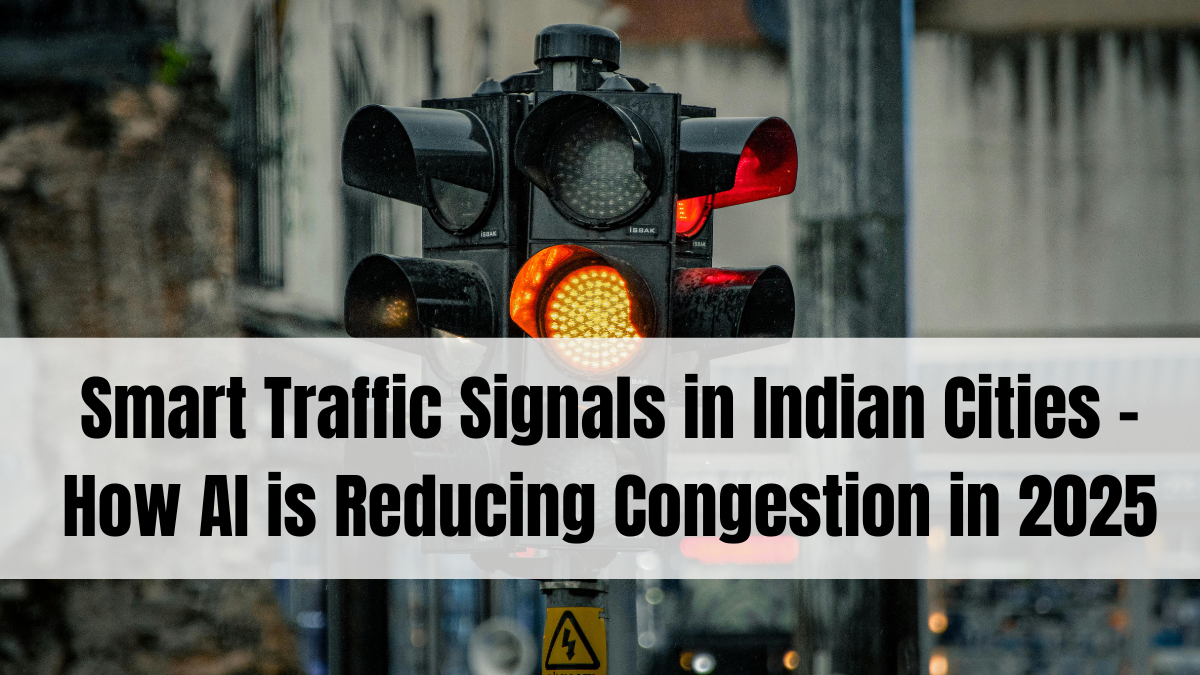India’s rapidly growing urban population has made traffic congestion a major challenge, affecting productivity, pollution levels, and quality of life. In 2025, many Indian cities are turning to smart traffic signals India 2025 — AI-powered systems designed to optimize traffic flow, reduce wait times, and enhance road safety.
These advanced signals use real-time data and machine learning algorithms to dynamically adjust signal timings, making urban travel smoother and more efficient.

What Are Smart Traffic Signals?
Unlike traditional traffic lights with fixed timers, smart traffic signals use sensors, cameras, and AI to:
-
Monitor vehicle density and pedestrian movement continuously.
-
Adjust green light durations based on current traffic conditions.
-
Prioritize emergency vehicles and public transport for quicker passage.
-
Communicate with other traffic management systems for coordinated control.
This adaptability helps prevent bottlenecks and improves overall traffic management.
Implementation Across Indian Cities
Several metropolitan areas have adopted or piloted smart traffic solutions:
-
Bangalore: Deploying AI-based adaptive signals that cut average wait times by 30%.
-
Hyderabad: Using sensor-driven signal control integrating with city traffic control centers.
-
Chennai: Piloting smart pedestrian crossing systems with AI vision for safety enhancements.
-
Mumbai: Implementing networked traffic signals for better coordination during peak hours.
-
Delhi NCR: Using AI-powered predictive analytics to manage traffic surges during events and emergencies.
These initiatives reflect a nationwide push toward smarter urban infrastructure.
Benefits of Smart Traffic Signals
-
Reduced congestion: Dynamic control minimizes unnecessary stops and idling.
-
Lower emissions: Smoother traffic flow cuts vehicle pollution and fuel consumption.
-
Improved safety: Real-time pedestrian detection and emergency prioritization prevent accidents.
-
Data-driven planning: Traffic data analytics help urban planners optimize road usage and infrastructure development.
These benefits contribute to sustainable and livable cities.
Challenges in Smart Traffic Signal Adoption
-
High initial investment in technology and infrastructure upgrades.
-
Integration complexities with legacy traffic management systems.
-
Ensuring data privacy and cybersecurity in connected devices.
-
Training personnel to manage and maintain smart systems.
-
Adapting to diverse traffic behaviors unique to Indian cities.
Addressing these challenges is vital for scalable and effective deployment.
The Future of AI in Urban Traffic Management
AI-enabled traffic signals are evolving toward integration with autonomous vehicles, real-time public transport tracking, and smart city IoT ecosystems. Future trends include:
-
Vehicle-to-infrastructure (V2I) communication for seamless traffic coordination.
-
Use of AI to predict traffic patterns hours in advance for proactive management.
-
Integration with mobile apps to guide drivers along optimal routes.
India’s urban centers are embracing these innovations to keep pace with growing mobility demands.
FAQs
What makes a traffic signal “smart”?
Its ability to dynamically adjust signal timings based on real-time traffic data using AI and sensors.
Which Indian cities have implemented smart traffic signals?
Cities like Bangalore, Hyderabad, Chennai, Mumbai, and Delhi NCR are leading deployments.
How do smart signals reduce pollution?
By reducing idling and stop-and-go traffic, they lower vehicle emissions and fuel use.
Are smart traffic signals expensive to install?
Initial costs are higher than traditional systems, but long-term benefits and efficiency gains justify investment.
Can smart traffic signals improve pedestrian safety?
Yes, many systems include pedestrian detection and adaptive crossing signals to enhance safety.
Click here to know more.
